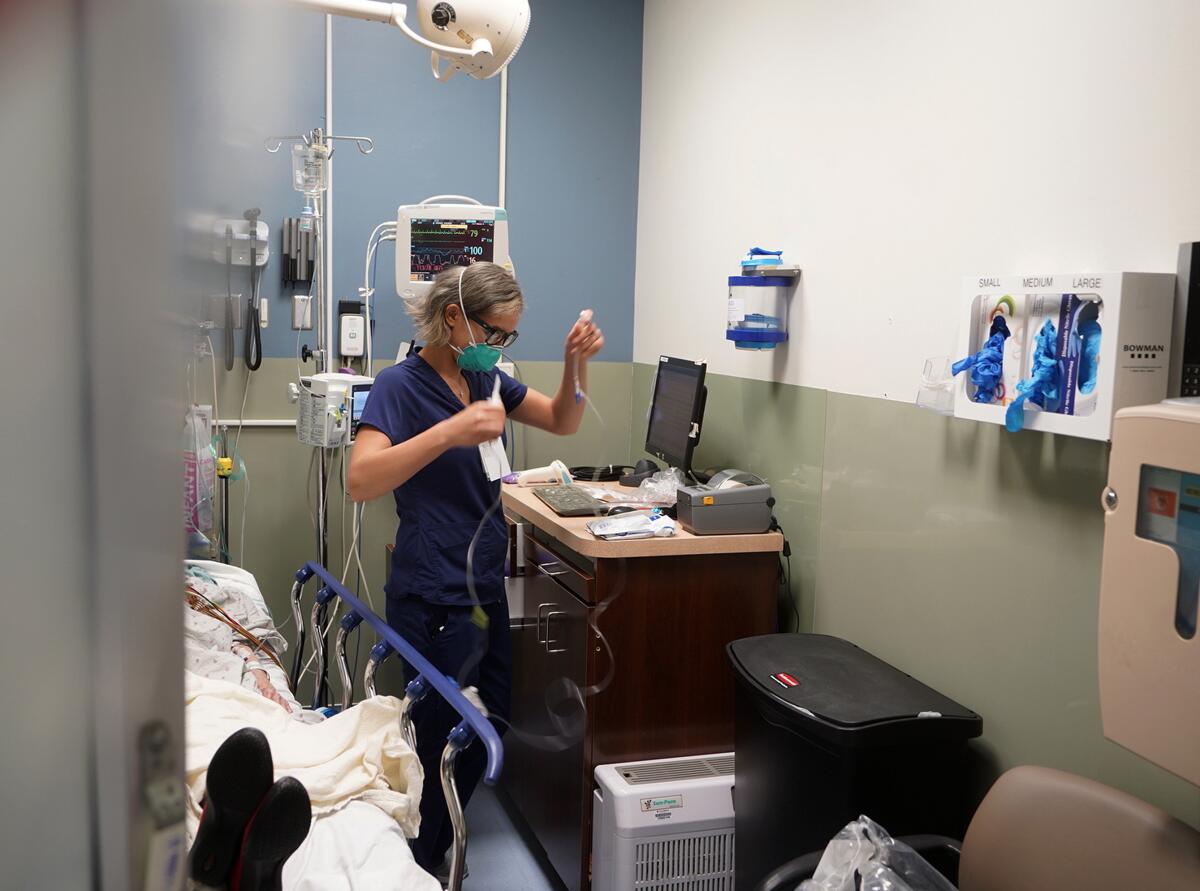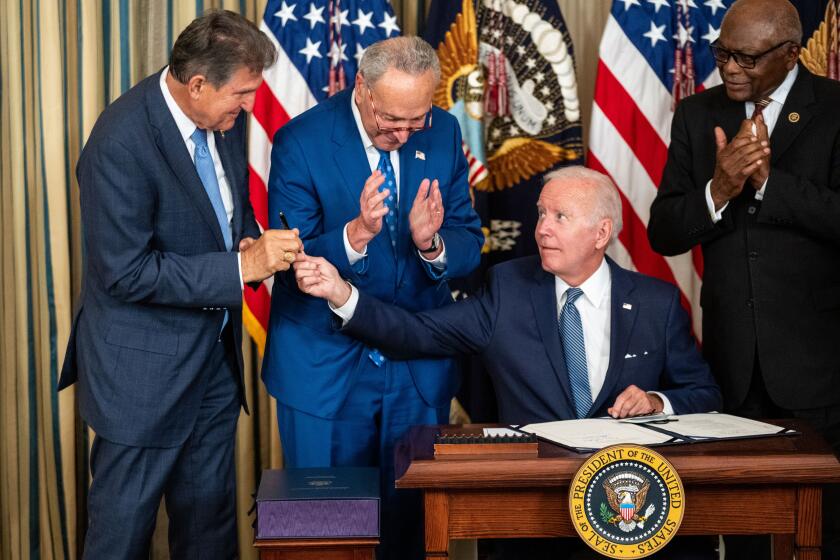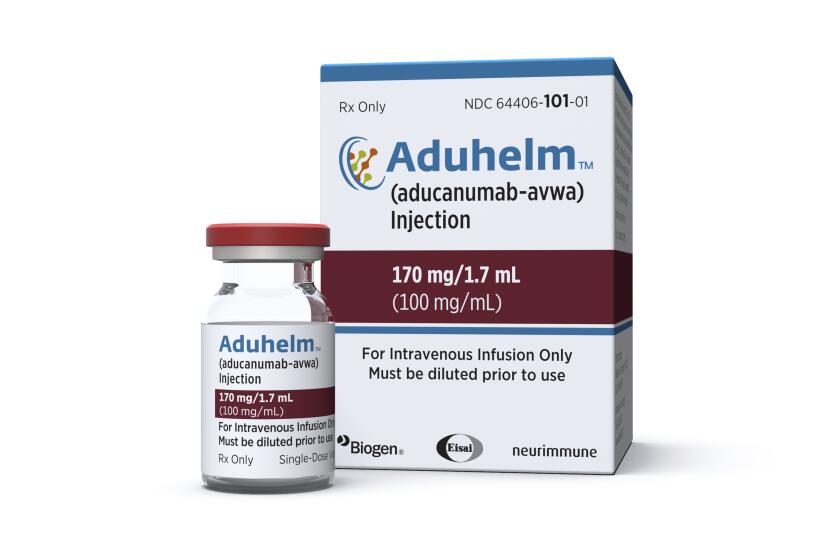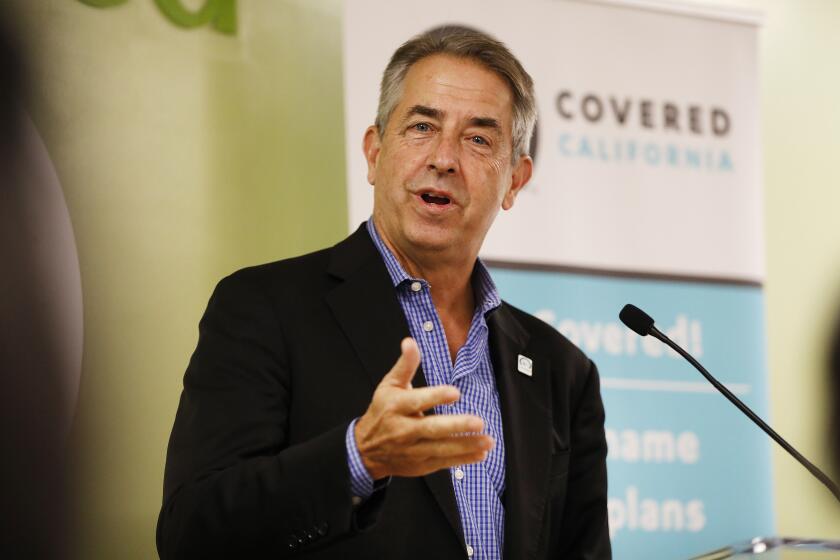Column: This life-saving drug will cost a record $2.8 million. Who will pay the price?

- Share via
For the estimated 1,500 Americans suffering from a blood disorder known as beta thalassemia, the Food and Drug Administration’s approval Aug. 17 of the drug Zynteglo was almost unalloyed good news.
As a scientific achievement, Zynteglo is remarkable. The treatment has been shown to effectively cure the disorder in as many as 90% of test cases.
That’s a life-changing development for those with the inherited condition, many of whom are otherwise condemned to receiving blood transfusions as often as every two weeks. The median age of death of those with beta thalassemia, which is typically diagnosed within a few weeks of birth, is 37.
Prices just keep getting higher and higher. It used to be that $5,000 sounded high, and now we’re at $2.8 million. It’s wild.
— Rita F. Redberg, UC San Francisco
Zynteglo is remarkable for another reason, not so happily. At the price of $2.8 million set by its developer, Cambridge, Mass.-based Bluebird Bio, it’s the most expensive single-treatment drug ever approved in the U.S.
That makes it “one hell of a policy challenge,” in the words of health insurance expert David Anderson of Duke University.
Get the latest from Michael Hiltzik
Commentary on economics and more from a Pulitzer Prize winner.
You may occasionally receive promotional content from the Los Angeles Times.
The reason, Anderson explains, is that even though Zynteglo might be cost-effective over the long term and from a social perspective even at $2.8 million, the one-year charge for it can bring ruin to an insurer’s profit-and-loss statement.
Zynteglo is one of a wave of genetics-based treatments destined to wash up on American healthcare shores in coming years. They’re aimed at varieties of cancer and other diseases for which no treatments have been previously found, or that require burdensome and expensive lifelong therapies.
Beta thalassemia falls into the latter category. The previous standard cure involved finding a matched donor of healthy red blood cells — typically a sibling. The donor’s healthy cells could be transplanted into patients to supplant the inherited cells, which can’t efficiently carry oxygen, leading to severe anemia.
Fewer than 1 in 4 patients have access to a matched donor, according to a report on Zynteglo issued in July by the Institute for Clinical and Economic Review, or ICER, an independent nonprofit that evaluates data to help healthcare stakeholders decide on prices and access to treatments.
Allowing Medicare to negotiate drug prices won’t help as much as anyone thinks.
Others require transfusions every two to five weeks as well as regular chelation treatment, which removes iron from the blood.
Those with severe beta thalassemia are forced to become “tethered to the health care system,” and even to specific geographical areas with medical centers that can provide the needed care, according to the report. “Patients plan their lives around transfusions, disrupting their ability to travel, take vacations, work, and study.” Even so, their average life expectancy is far below that of healthy people.
Multiple issues swirl around the launch of Zynteglo. One is sticker shock.
Bluebird has rationalized the high price of Zynteglo by referring to the lifetime cost of transfusions and chelation therapy, which the company says can run as high as $6.4 million. “The average total health care cost per patient per year is 23 times higher than the general population,” Bluebird spokeswoman Jess Rowlands told me by email.
“Prices just keep getting higher and higher,” says Rita F. Redberg, a UC San Francisco cardiologist and an expert in assessing new medical technologies for effectiveness. “It used to be that $5,000 sounded high, and now we’re at $2.8 million. It’s wild.”
Many high-priced drugs reach the market without sufficient evidence that they deliver the benefits their manufacturers claim, Redberg says. “In our system there’s generally very little relationship between costs and benefits to patients.”
An important complication is what the late economic commentator Barbara Ehrenreich called America’s “increasingly impersonal, fragmented, irrationally arranged set of health services” — in 1970.
Since then, the challenges have only multiplied, despite occasional outbreaks of reform such as the Affordable Care Act and the recently enacted cap on insulin prices (the latter only for enrollees of government programs such as Medicare).
Federal law allows the government to force a huge discount on drugs it funded, but it’s hasn’t claimed its rights on the hugely expensive prostate drug Xtandi.
The ACA has brought health coverage to previously uninsured or underinsured populations, but the gains in healthcare access are threatened with becoming undone by the explosion in prices for innovative therapies.
In our system, insurers saddled with the one-time cost of a treatment aimed at creating economic benefits in the future can’t be assured of reaping those benefits themselves, because of the possibility that the patient will be covered by a different insurer in the future.
Perversely, that’s less of an issue for drugs aimed at large populations of disease patients. Consider Gilead Sciences’ Harvoni and Sovaldi, hepatitis C cures, which once reigned as the emblematic high-priced drugs because they were priced at close to $100,000 per treatment.
But with a population of millions of hepatitis C patients in the U.S., the chances were good that every major health insurer would have enrollees benefiting from the health improvements produced by shedding the virus.
The U.S. market for Zynteglo, however, might not exceed 850 patients, Bluebird executives told investment analysts on a conference call the day after the FDA approval. That means the chances that any insurer confronted with a $2.8-million bill for the drug may have little hope of capturing the benefit of no longer paying for transfusions and other expenses.
One obvious solution is to create a national reinsurance program through which the government assumes the cost of high-priced treatments, in effect spreading the expense among all Americans. A cost-sharing program along those lines is part of the Affordable Care Act, but it’s limited. For the most part, the federal government has left it up to states to craft their own reinsurance systems, but only seven states have done so.
Another concern for healthcare experts is drugmakers’ practice of basing their launch prices of new drugs on the purported downstream savings from the new therapies.
Column: How the FDA’s lousy judgment and a greedy drug company combined to hit Medicare members hard
The FDA approved an unproven Alzheimer’s drug, and its manufacturer priced it in the stratosphere. Result: Medicare members get higher premiums.
If the treatments being replaced have themselves been overpriced, “you’ve become locked into the cycle of paying high prices for new therapies because you were already overpaying for old therapies,” says David Rind, the Institute for Clinical and Economic Review’s chief medical officer.
By allowing drug companies to set their launch prices based on the cost of old treatments that their new drugs are purportedly offsetting, Rind says, society allows itself to be deprived of the economic benefits of medical innovation.
“It’s not obvious why the U.S. should keep baking into the price [of new drugs] those prior high costs,” Rind told me.
In the case of Zynteglo, the institute calculated that if Bluebird were to share the gain from offsetting the future costs of transfusions, chelation and other forgone expenses equally with society at large rather than keeping it for itself, it could do so by bringing out the new drug for $1.3 million to $1.8 million rather than $2.8 million.
Bluebird says it will address some of the pricing issues by allowing insurers and other payers to pay for the drug in installments, and offering them an innovative money-back guarantee: If Zynteglo doesn’t wean a patient off transfusions for two years, it will rebate up to 80% of the cost.
Bluebird says payers have been receptive to the arrangement, but its terms are still ambiguous. Nor is it certain that two years is sufficient to judge the drug’s long-term effectiveness; only 41 patients were enrolled in the two clinical trials on which the company bases its claims for the drug’s efficacy, and their progress has been tracked for an average of 3½ years and in some cases less than two years.
After 10 years in the ACA hot seat, Covered California boss Peter Lee looks back and ahead.
Zynteglo hasn’t been seen by investors as an especially potent moneymaker for Bluebird, which was founded in 1992, went public in 2010 and has never generated any revenue from product sales. Bluebird shares had peaked above $151 in March 2018 in anticipation of revenue from its genetics-based drug pipeline, and its market capitalization stood at about $6.5 billion.
In 2019, the company announced that it would introduce Zynteglo in Europe for $1.8 million per treatment, about twice what European regulators anticipated. The regulators balked and threatened limits on patient access.
Bluebird withdrew the drug from the German market because regulators there refused to meet Bluebird’s price demands. Meanwhile, a clinical trial of another Bluebird drug pointed to possible adverse side effects. Bluebird shares actually fell in the days following the FDA’s approval on Aug. 17. They closed Thursday in Nasdaq trading at $7.11, giving the company a market cap of about $548 million.
Zynteglo’s stature as America’s most expensive single drug may not last for long, considering the genetics-based treatments expected to reach the market in coming years. Many will address diseases suffered by vastly larger populations than those with beta thalassemia.
Sickle cell disease, for instance — an inherited blood disorder for which Bluebird is developing a treatment — afflicts an estimated 100,000 Americans, especially in the Black community.
These scientific advances will present America’s healthcare system with an unprecedented test. On one hand, the advances are remarkable. “We should be excited to have a therapy like Zynteglo,” Rind says. “For a newborn with beta thalassemia to grow up not tied to a healthcare system and iron overload and transfusions is a really great thing.”
On the other hand, if the U.S. can’t place a leash on drugmakers’ prices, the consequences will be less access to medical advances for most patients, and especially a widening gulf in access between rich and poor.
“It’s very concerning to see any drug launched at this price,” Redberg says. “Launch prices keep moving into the stratosphere, and that’s really not good for Americans.”
More to Read
Get the latest from Michael Hiltzik
Commentary on economics and more from a Pulitzer Prize winner.
You may occasionally receive promotional content from the Los Angeles Times.















